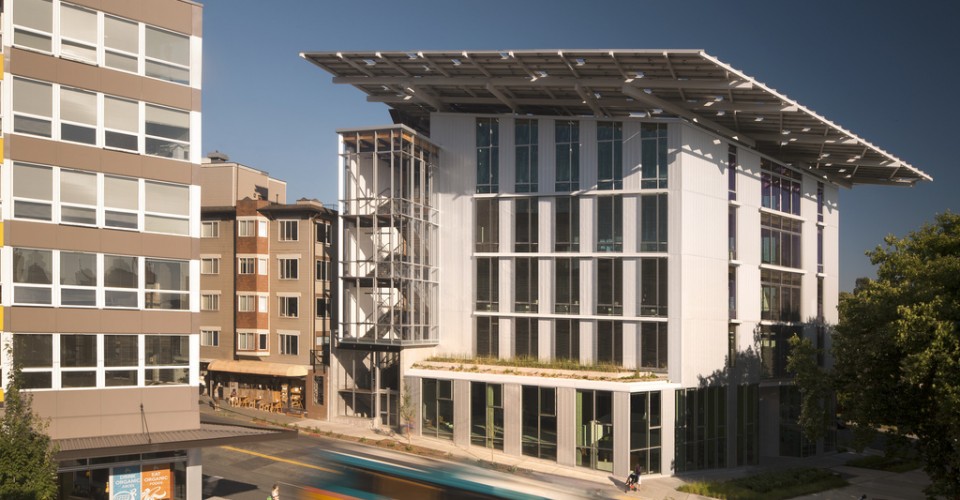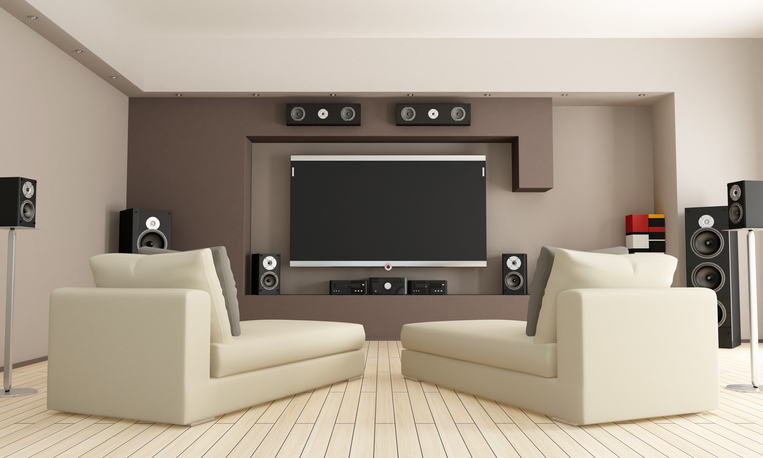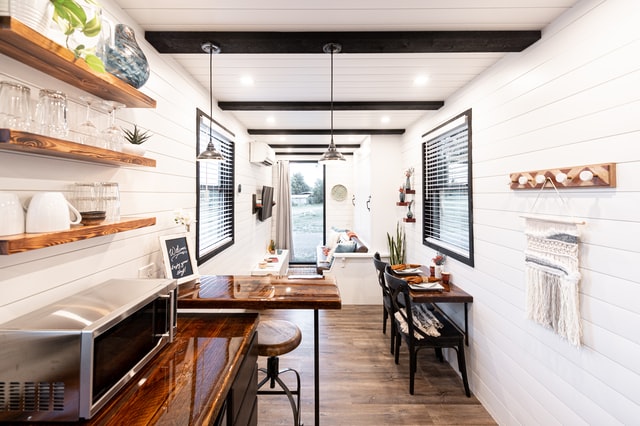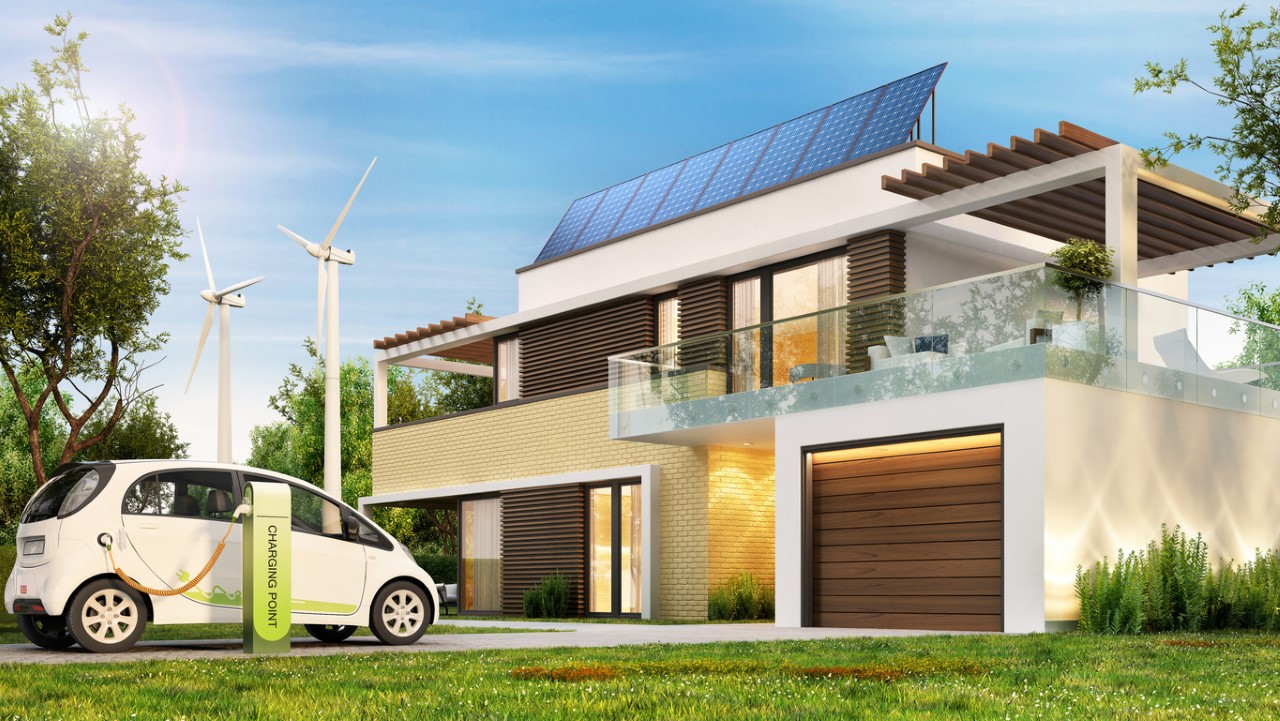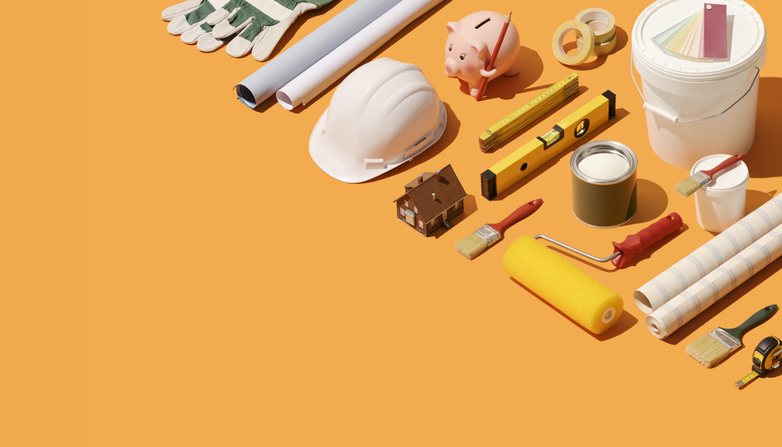The Bullitt Center, located in Seattle, is one of this city’s first Living Buildings. Funded by the Bullitt Foundation, whose mission is to support ecological and environmental causes, this building beautifully illustrates the point that a carbon neutral, energy neutral and sustainable office building can actually work. Leading by example, the Bullitt Center was designed within the parameters of the Living Building Challenge, which requires buildings to meet 20 sets of requirements among the following areas:
Site: The location will support a pedestrian-, bicycle-, and transit-friendly lifestyle.
Water: Rainwater will be collected on the roof, stored in an underground cistern and used throughout the building.
Energy: A solar array will generate as much electricity as the building uses.
Health: The building will promote health for its occupants, with inviting stairways, operable windows and features to promote walking and resource sharing.
Materials: The building will not contain any “Red List” hazardous materials, including PVC, cadmium, lead, mercury and hormone-mimicking substances, all of which are commonly found in building components.
Equity: All workstations are within 30 feet of large operable windows, offering all workers access to fresh air and natural daylight.
Beauty: Stunning architecture, an innovative photovoltaic array, a green roof and other native plantings, large structural timbers and a revitalized pocket park help beautify the surrounding neighborhood.
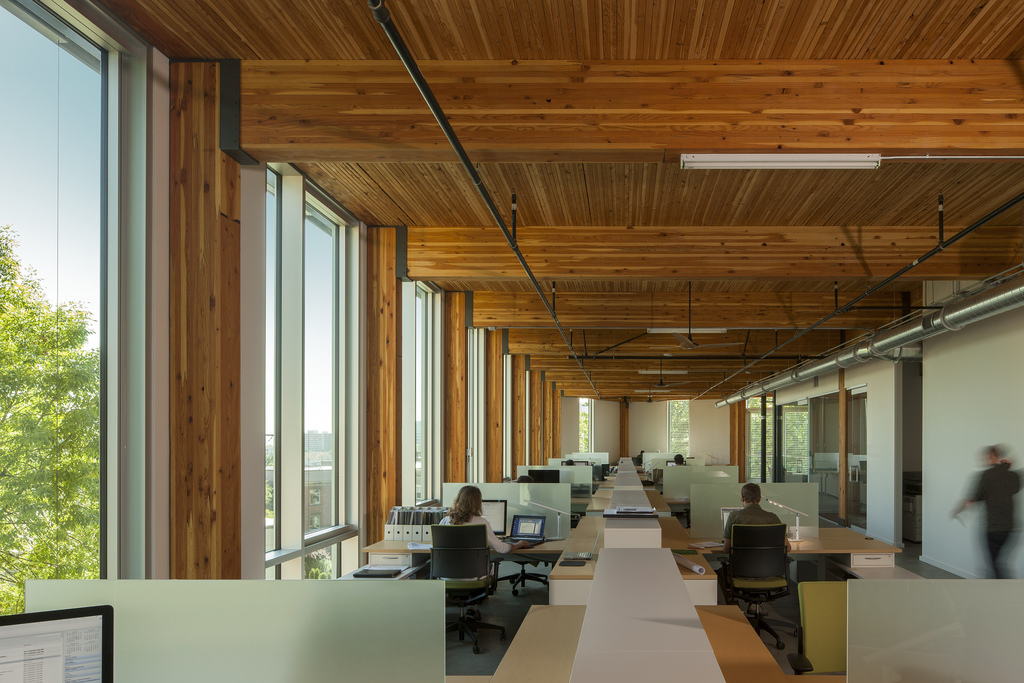
I recently toured the Bullitt Center with communications director, Brad Kahn, who gave me an incredible look at the bowels of the building. Like a modern-day diorama, the mechanical aspects of the building are in full view behind glass, with clearly labeled valves and pipes, to help educate and inform both tenants and visitors alike.
What truly stood out for me was the fact that although it might be daunting to completely turn my home into a super-green environment, I could actually make better, and healthier decisions when it comes to home improvement, maintenance and renovation.
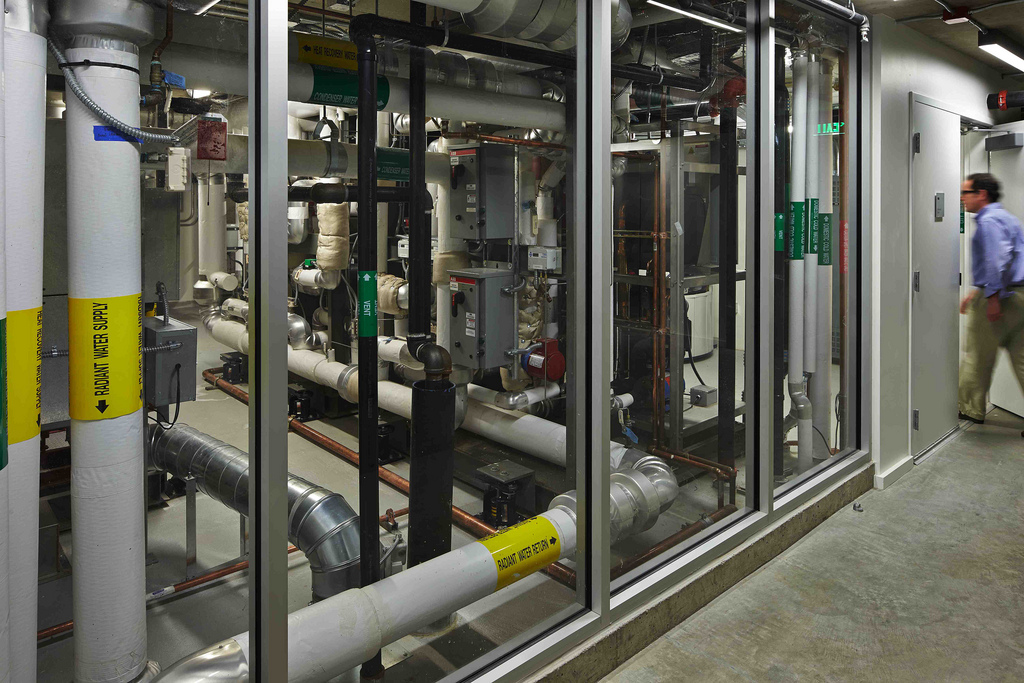
Reduce chemical exposure
Among other construction challenges, the Bullitt Center banned hundreds of chemicals from their building. If you’ve ever read the “ingredients” label on adhesives or other building materials, you know that either the list is incredibly long (and unpronounceable), or there aren’t any ingredients listed. The Bullitt Center team solved this problem by having the manufacturers offer proof that the “banned” ingredients weren’t in the product and, in a few cases, worked with the manufacturer to create an alternative product. Here is a full list of the materials used in the Bullitt Center.
For homeowners, it’s important to realize that when it comes to home construction, home renovation, or simple DIY, we have a choice in the products we purchase. Although the banned chemical list sounds overwhelming for the average homeowner, Kahn says that if there are chemical you and your family are trying to avoid, all you have to do is ask. “You’d be surprised how many great products are available off the shelf,” like FSC wood and low-VOC paint. “If living in a healthy home is important to you, put it on the priority list when talking to your professional.” You can also look for green building contractors on Porch.
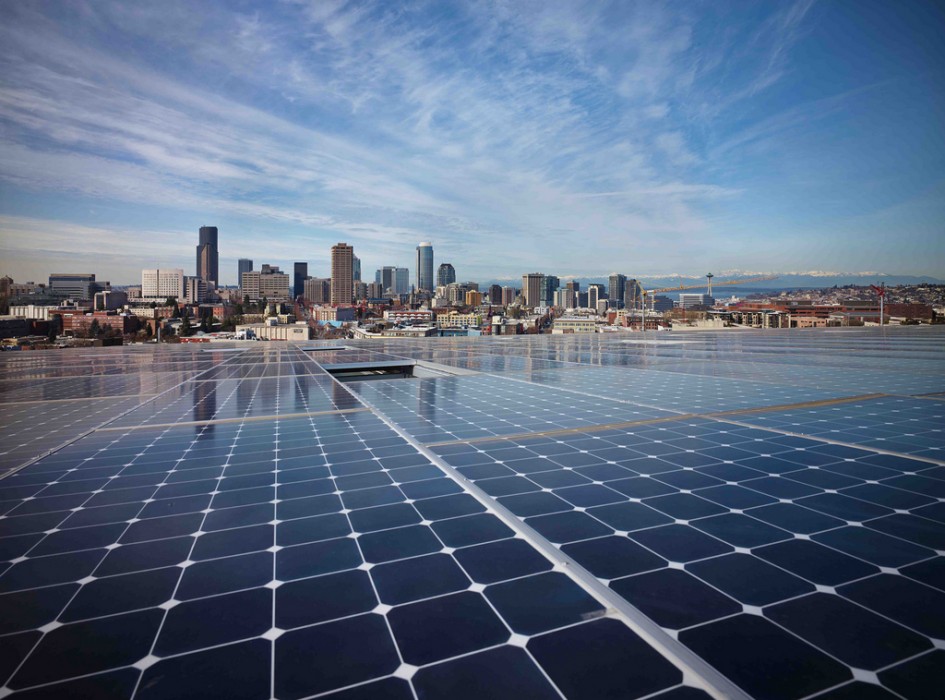
Reduce energy usage
Like all net-zero buildings, the Bullitt Center uses solar energy to collect energy from the sun and use it to power the entire six-story building. Excess energy collected in the sunny, summer months are given back to the city; during cloudy months, the building pulls that reserved energy back into the building. The effect is a net-zero energy usage and proves that even in the often grey skies of Seattle, using the sun as a natural resource is a powerful tool.
Solar energy can power your home and appliances and even generate excess energy that can be sold back to your city. Many cities are offering financial incentives for homeowners to install solar panels on their home. For example, in the city of Seattle homeowners can participate in a community solar program that offers credits and rewards for directing harvested sun to a community account. Your city may even offer further incentives to buy from local solar manufacturers.
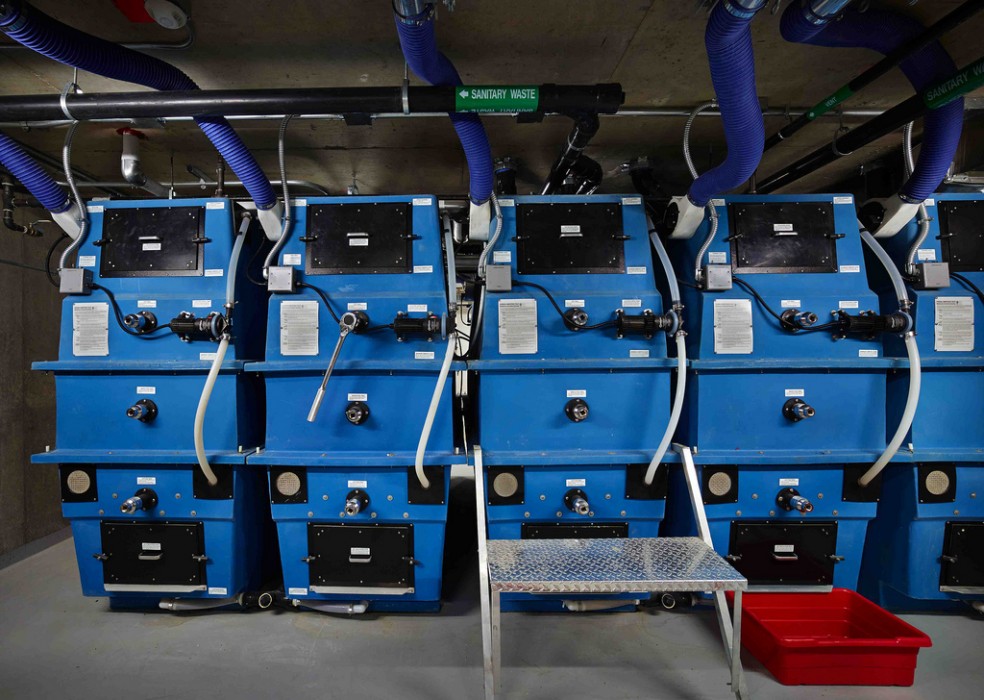
Reduce waste
One of the most intriguing features of the Bullitt Center are the toilets. These aren’t your average low-flow toilet. The toilet itself looks like a normal toilet but instead of a bowl full of water, the receptacle empties straight down into a large composting machine. When a person sits on the toilet, a small amount of foam (bio-degradable soap mixed with about 2 tablespoons of water) slowly creep down the sides of the bowl, encouraging waste to move downwards. The compost bins use wood chips to slowly decompose the material, which goes through a sophisticated filtering process and eventually makes it’s way into approved bio fertilizer, to be used in forests and other nature preserves.
By comparison, even a low-flow residential toilet uses about 2 gallons of water per flush. The type of toilet system used by the Bullitt Center may not be easy to replicate however, homesteaders and people living off the grid use a very similar method to compost their human waste. So the process itself is quite old and makes a lot of sense.
Other waste, like grey water from sinks and showers, get siphoned into a large 500 gallon tank and filtered. This water is then moved out into a wetlands located on the property. The wetlands is really just a small patch of plants who happen to be great natural filterers. Kahn explained that the design team did a lot of research into the original ecosystem of the buildings location. It was determined that the original land was old-growth trees, which typically use about 60% of the water that falls on the ground and filters it into the soil below. The rest of the water is normally lost to evaporation. The wetland filtration system aims to mimic the original landscape; the wonderful part about the wetlands is that it provides natural landscaping for the employees.
Homeowners are starting to become more educated about planting indigenous or native plants that can easily adapt to the regional climate. Tired of paying high water bills or being forced to restrict water usage, homeowners are also becoming more aware about zonal planting, xeriscaping and getting rid of high maintenance grass. All of these small changes actually create a larger effect on the local ecosystem, as well as on monthly costs. If you need help deciding how to incorporate water-reducing plants in your yard, look for a landscaper and ask them about their experience.
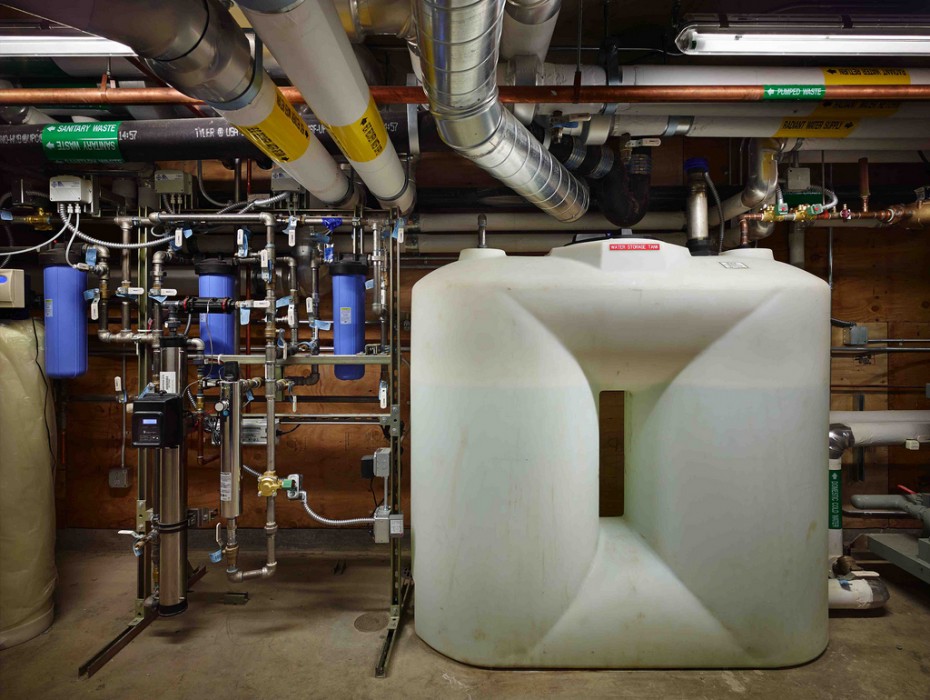
Reduce water
Reducing water use is certainly a hot topic in our country. With states like California under strict water usage, it’s a smart idea for buildings like the Bullitt Center to set a high standard of water usage. The building captures all water that falls on the solar panel roof and collects it in a large 500 gallon tank. This water services all of the buildings sinks, showers and toilets and so far, they’ve been successful at having a surplus of water. Because the water is technically sold to the tenants, there is a very high standard of water quality. The water is triple filtered and passed through a UV sterilization in order to become clean enough for consumption. Water is seemingly plentiful in Washington State however, the team behind the Bullitt Center recognized that because most of the drinking water comes from snow (not rain), and because the projected temperatures for this region were expected to climb during the forecasted winters (due to global climate changes), it would be prudent to collect every drop that fell from the sky.
Of course homeowners in many regions are experiencing lowest water levels on record, and completely understand the reasoning behind rainwater collection. There are many rainwater collection devices that can be purchased off-the-shelf and easily installed. If a homeowner wishes to use the collected rainwater for watering plants or washing cars, this water doesn’t have to be treated. For flushing toilets or washing machines, a carbon filter is recommended to removed sediment and particles that may clog valves. For showering, washing hands or drinking, further sanitization and disinfecting is required so that bacterial organisms are removed. Many rainwater treatment companies offer a range of products to accommodate various collection systems. These devices are great for outdoor watering and cleaning. Of course, harvesting water for human consumption needs to be treated entirely differently and is better left to a professional.
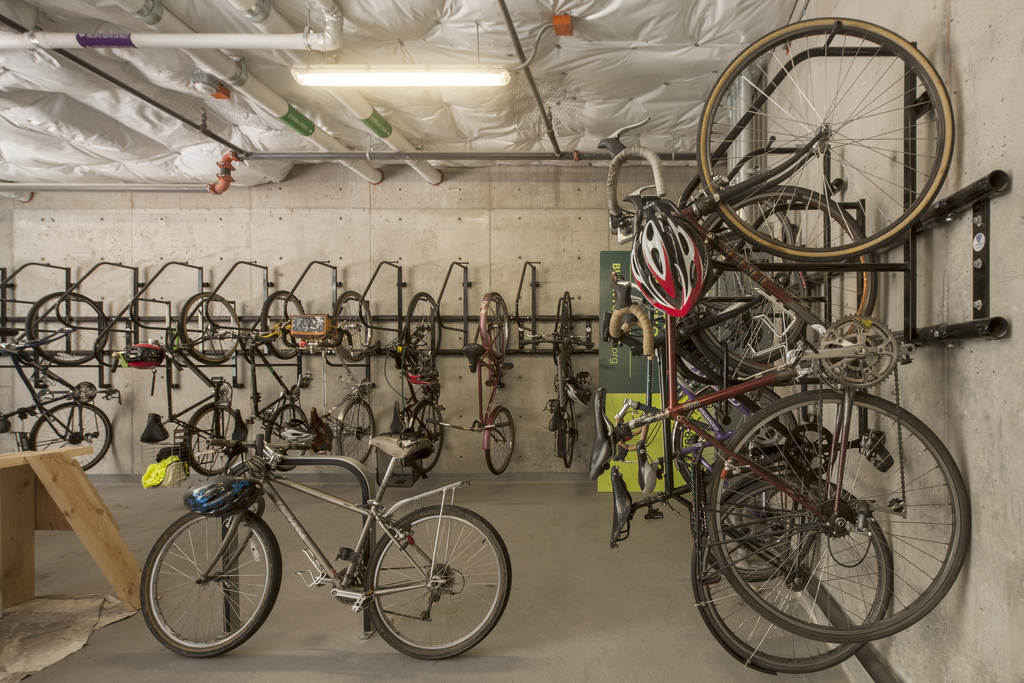
Visiting the Bullitt Center
I strongly encourage you to personally visit this unique and groundbreaking building in Seattle. Tours are offered to the public as well as schools. Aside from the actual structure, so much care and attention was designed for the employees as well. From the showers, bike station (complete with storage, air pump and tool center), and stairwells bathed in light to encourage walking, you can tell that this building is much more than a typical office building. If you can’t see it in person, be sure to read through their literature, facts and figures to learn more about how this building came to be, and how it plans to last for the next 250 years.
All images and information courtesy of The Bullitt Center
